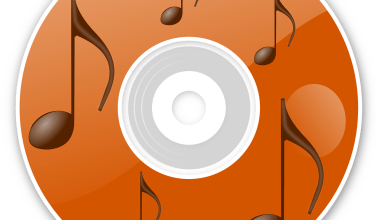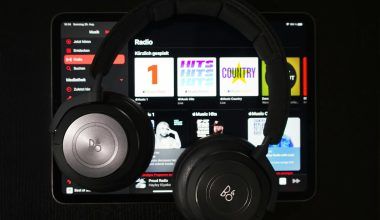If you’re an artist, producer, or DJ, creating music is only half the journey. The next big step is sharing your sound with the world so people can listen, enjoy, and support your work. This is where music distribution comes in. Whether you want to sell your tracks on Beatport, get featured on Spotify playlists, or have your songs on Apple Music, this guide will help you understand everything about music distribution in simple, easy-to-follow terms.
What Is Music Distribution?
Music distribution is the process of delivering your music to platforms where people can stream, download, or buy it. Think of it as the bridge between your music and your audience. Without distribution, your tracks might never reach the listeners you’re trying to connect with.
In the past, music distribution meant physical copies like CDs or vinyl records being sent to stores. But today, it’s all about digital distribution. Platforms like Spotify, Apple Music, and Beatport have made it possible for independent artists to share their music globally without needing a big record label.
Why Is Music Distribution Important for Artists?
Music distribution is like planting seeds for your music career. If your tracks are not on platforms like Beatport or Spotify, people may not discover you. Here’s why music distribution is important:
- Reach Listeners Worldwide
Music distribution ensures your tracks are available in different countries on various platforms. Fans from any corner of the globe can find and enjoy your music. - Make Money from Your Music
Platforms like Beatport, iTunes, and Amazon Music allow fans to buy or stream your songs, helping you earn income from your hard work. - Grow Your Fanbase
Music distribution can help you reach new audiences and grow your followers on platforms like Spotify and Beatport. - Get Featured on Playlists
Streaming playlists are one of the best ways to gain exposure. By distributing your music, you have a chance to be included in playlists that millions of people follow.
How Does Music Distribution Work?
The process might seem overwhelming at first, but it’s actually straightforward when broken into steps. Here’s how music distribution works:
1. Create High-Quality Music
Before anything else, make sure your music sounds amazing. Professional production and mastering are key. Platforms like Beatport require your tracks to meet certain technical standards, like high-quality WAV files.
2. Pick a Distribution Service
A distribution service (or “aggregator”) helps you upload your music to platforms like Spotify, Apple Music, and Beatport. Some popular distributors include:
- DistroKid: Quick and easy to use.
- TuneCore: Offers more control over your royalties.
- CD Baby: Great for selling both digital and physical copies.
- Label Worx: A favorite for electronic music producers looking to sell on Beatport.
3. Upload Your Music
Once you’ve chosen a distributor, upload your tracks along with the required information:
- Metadata: This includes your song title, artist name, genre, and release date.
- Cover Art: Use a professional, eye-catching image. Platforms like Beatport have strict rules about artwork quality.
4. Distribute to Platforms
Your distributor will handle sending your music to different streaming services and stores. For Beatport, ensure your distributor is partnered with them (not all are).
5. Promote Your Music
Once your music is live, it’s time to spread the word. Share your release on social media, email newsletters, and with DJs or playlist curators.
How to Sell Your Music on Beatport
Beatport is the go-to platform for electronic music producers and DJs. Here’s how you can get your music on Beatport and make the most of its features:
Step 1: Understand the Beatport Audience
Beatport focuses on electronic music genres like house, techno, trance, and drum & bass. If your music fits these genres, Beatport is a great platform for you.
Step 2: Choose a Compatible Distributor
Not all distributors can send music to Beatport. Look for services like Label Worx, Symphonic Distribution, or Ditto Music that have direct partnerships with Beatport.
Step 3: Prepare Your Release
Before uploading, ensure:
- Your audio is in WAV format (16-bit or 24-bit, 44.1 kHz).
- Your metadata is complete and accurate.
- Your cover art meets Beatport’s design standards.
Step 4: Submit Your Tracks
Upload your music via your distributor and specify that you want it available on Beatport. You can also choose additional platforms for wider distribution.
Step 5: Promote Your Beatport Release
After your music is live, create buzz by:
- Sharing DJ charts featuring your tracks.
- Encouraging fans to buy or download your music.
- Collaborating with other artists for more exposure.
Top Platforms for Music Distribution
Apart from Beatport, there are many platforms where you can distribute your music. Here are some of the most popular ones:
- Spotify
The world’s largest streaming platform, perfect for reaching mainstream listeners. - Apple Music
Known for its curated playlists and high-quality streaming. - Amazon Music
Offers both streaming and purchase options. - Tidal
Focuses on high-resolution audio and artist-friendly royalty models. - YouTube Music
Great for artists who want to combine visuals with their music. - SoundCloud
Ideal for building an organic fanbase and testing new tracks.
How to Promote Your Music After Distribution
Music distribution is only half the journey. To make sure people actually listen to your tracks, you’ll need a solid promotion plan. Here are some tips:
- Social Media Marketing Share snippets of your music on Instagram, TikTok, and Twitter to create excitement around your release.
- Collaborate with Other Artists Work with fellow artists to reach new audiences. For example, a joint track could expose you to another artist’s fanbase.
- Submit to Playlists Playlists are a powerful way to boost streams. Platforms like Spotify let you pitch your tracks for playlist consideration.
- Engage with Fans Reply to comments, host live sessions, and share behind-the-scenes content to build a loyal community.
Challenges in Music Distribution
While music distribution opens doors, it can also come with challenges:
- Standing Out in a Crowded Market Millions of tracks are uploaded daily, making it tough to get noticed.
- Understanding Royalties Streaming platforms pay artists differently, so it’s important to understand how royalties work.
- Marketing Efforts Without proper promotion, even great music can go unnoticed.
The Future of Music Distribution
The music industry is constantly evolving. New technologies like blockchain and NFTs are changing how artists distribute and monetize their music. Platforms like Beatport are exploring these advancements to offer better transparency and payment systems for artists.
Conclusion
Music distribution is the key to turning your passion into a successful career. By understanding the process, choosing the right platforms (like Beatport), and promoting your work effectively, you can share your sound with fans across the globe.
Whether you’re an electronic music producer targeting Beatport or an indie artist aiming for Spotify playlists, taking control of your music distribution will help you grow as an artist. Start your journey today, and let your music be heard everywhere!
Related Articles:
For further reading, explore these related articles:
- How to Handle Music Distribution Disputes on Apple Music
- Importance of Metadata in Music Distribution on Apple Music
- Top Music Distribution Companies in India
- Top Digital Music Distribution Sites for Independent Artists in 2024
For additional resources on music marketing and distribution, visit Deliver My Tune.






